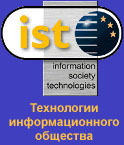
|
Smart Piezoelectric Multi-degree-of-Freedom Actuators/Sensors
-
PROJECT NUMBER
-
CP94-1109
-
PROJECT TITLE
-
SPA - SMART PIEZOELECTRIC MULTI-DEGREE OF FREEDOM ACTUATORS/SENSORS
-
PARTICIPANTS
-
|
*Russian Federation
|
MOSCOW STATE INSTITUTE FOR STEEL & ALLOYS
|
Partner
|
|
*United Kingdom
|
TRANSTEC
|
Coordinator
|
-
ABSTRACT
-
SPA is a series of smart piezoelectric actuators/sensors which combine high accuracy of movement with compact size. SPA have high resolution, a low time constant, easy compatibility with computer control and the ability to function under a wide range of temperatures. These devices are well suited to the development of smart or intelligent mechanisms, and provide a basis for high precision actuators and sensors for the next generation of robotics
-
KEYWORDS
-
Control system
Robotics
Sensor
-
DOMAIN
-
Esprit domain Integration in manufacturing
-
SUMMARY
-
Piezoelectric actuators are a major new component technology that leading-edge companies in Europe are starting to introduce into products.
Ideal for computer applications involving precise control of hardware, they are easily incorporated into digital signal generating and processing systems. Esprit's SPA project has developed a new breed of smart piezoelectric actuators/sensors, which combine high accuracy of movement with compact size. These devices perform a crucial role in smart or intelligent mechanisms, and although relatively unknown up to now, they are expected to have wide application in precision engineering in the future.
Other, subsidiary industrial uses include medicine and space research.
The results comprise novel piezoactuator prototypes with multiple degrees-of-freedom, such as multiple-joint mini robot, active bearings, robot eyes and Q-switch modulator for laser. Based on the concept of active kinematic pairs of piezoactive joints, these novel mechanisms will offer future users devices with various advantages, from both the engineering and economic points of view.
The ideas evolved here are to be further developed and employed in the design of a new generation of robotics actuators and sensors for possible applications in various industries (automotive, manufacturing, precision engineering etc.) as well as medical surgeries.
-
BUSINESS OPPORTUNITIES
-
As a mechatronic device, the SPA actuator/sensor exhibits some extremely desirable characteristics, having high resolution, a low time constant, easy compatibility with computer control and the ability to function under a wide range of temperatures. It is well suited to the development of intelligent mechanisms. Applications to emerge from the SPA project include robotics, positioning devices, optical scanning systems and precision engineering systems. The SPA demonstrates how engineering and mechatronics designers can use these new devices to develop precision products.
-
TECHNICAL PERSPECTIVE
-
The concepts of piezoelectric effect and active kinematic pairs of piezoactive joints have been successfully studied and utilised to create piezoelectric actuators such as multiple-joint mini robot, active bearings, robot eyes and Q-switch modulator for laser. These actuators have the following characteristics:
-
controllable number of degree of freedoms.
-
multi-functionality (possible sensorisation).
-
self-diagnostic, -repair and -adaptation.
-
high resolution (less than 0.01 mm) and wide velocity range.
-
wide operating temperature range (-260 C to Curie point, which is 800 C for Lithium Niobate based materials.
-
low time constant (fast response time).
-
instantaneous positional locking with no backlash.
-
low cost.
-
low power consumption.
-
structural simplicity and light weight.
-
ease of computer-based control and interface.
-
insensitivity to radiation.
-
low Electro Magnetic Field (EMF).
-
non-ferromagnetic parts.
-
The present piezoactuator models are of high resolution and positional precision. However, they still lack adequate mechanical torque and ideal user control/interface systems. Efforts are currently undertaken at De Montfort University to achieve fully operational actuators in the near future. Once this task is accomplished, users will be able to enjoy high precision robotic actuators at reasonably low cost.
-
CURRENT APPLICATIONS
-
The various piezoelectric prototypes are presently at the final experimental stages and extended approaches have been planned to obtain better improved systems. The envisaged commercial applications of the prototypes will commence within the industrial partners upon project completion.
-
TERMS AND CONDITIONS
-
Results obtained hitherto will be further studied and improved by the consortium members. Interested companies should contact IMS or De Montfort University.
|
 © European Communities, 1998
© European Communities, 1998
|











 © European Communities, 1998
© European Communities, 1998